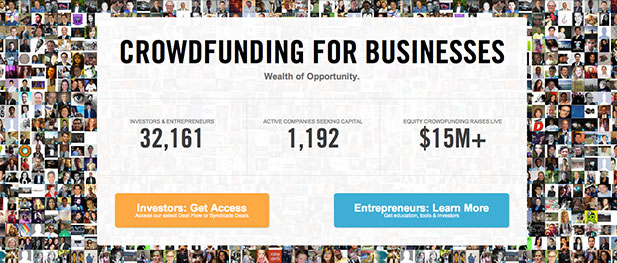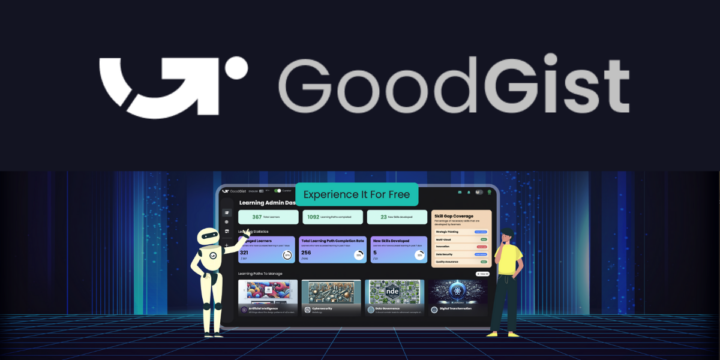Last week, Title II of the JOBS Act lifted an 80-year ban on general solicitation for U.S.-based private companies. Historic? Yes. But, what does this mean for the entrepreneur and the investor? In short, Title II allows companies to advertise investment offerings. Of course, that’s just the beginning…
I sat down individually with Chance Barnett, CEO of Crowdfunder, Jared Iverson and Sean Schantzen, co-founders of Healthfundr, and Scott Levine, co-founder of iSelect Fund to further discuss the implications of these new rules. They each had quite a lot to say, and with their varied backgrounds, there’s a lot to digest here. Here’s their thoughts on the new general solicitation rules, explaining the positive and negative, things entrepreneurs need to be careful of, and even their predictions for the future.
So, What’s General Solicitation All About?
While all four are excited about the implications, both entrepreneurs and investors need to understand exactly how these new rules can affect them. To open the discussion, Chance Barnett, who appeared on Fox Business the day Title II went into effect, cautions that there is a proper process for utilizing general solicitation. “I think a lot of people are unclear. So now with the right education and right basic process, filing with the SEC and working with the right company, like Crowdfunder, can put out a broader message to their community, to their network, on social media, and let people know they’re fundraising and what’s happening with their business,” Barnett said, speaking to the positives for entrepreneurs. “And, [entrepreneurs can] potentially engage a larger pool of backers or investors to come in and take a look and engage with their business or potentially invest.”
What Does This Mean For Investors?
With an overwhelmingly positive response from entrepreneurs, it’s on the investors’ side where enthusiasm is a bit split. Barnett walked through the positives, explaining, “What it means for investors, unless you’re a really active angel investor, you often don’t find out about the great companies and entrepreneurs that might be in your local community. This makes it possible for people to find out about great businesses that are either local, or what other investors are investing in. I think that’s one of the most interesting parts of this, that the everyday investor has the opportunity to co-invest and know about what more professional or seasoned investors are doing.”
While Iverson agrees with the possibilities, he explains the centerpiece of the criticism, stating, “Title II has been getting a lot of pushback in the way the SEC has drafted the rules because a lot of the status quo angel investors, who are currently active in the space, don’t like the additional requirements that it puts on them to have to verify their accredited investor status. That was a big change. Before this happened, accredited investors could self-certify. Now, when people generally solicit under Title II, they have to take reasonable steps to verify that the investor is accredited. And you can imagine a lot of people are unhappy about that because a lot of angel investors don’t want to have to go through that process of disclosing information about their financials.”
Levine reinforces that and adds, “Remember, Title II only applies to “accredited investors” who, by definition, have a certain level of sophistication. No matter how they are procured, having dozens and dozens of private investors gives professional money resources (e.g., venture capital firms) headaches. This isn’t new. So, if entrepreneurs are going to solicit widely for hundreds of $1,000 investments, that will be an issue. At the same time, if a company has 5-10 investors at $50-100k, that’s not atypical for early stage / angel funding. The fact that they were found via general solicitation is not, in my opinion, going to be an issue for professional investors.”
“There’s a little negative side, but this doesn’t create something new that’s negative,” acknowledges Barnett. “What I can see is that the VC concern is that there are a variety of investors who might be problematic in the future because they’re inexperienced. If they get upset or don’t understand the process of early stage startup life, that it’s not a straight path to success, this represents a potential growth or proliferation of that.”
Make Sure You Know The Rules
Schantzen also cautions entrepreneurs with making sure they know the rules. “Our recommendation for them is to really make sure they know what they’re doing and how they’re doing it so they don’t run into any issues with some of the proposed rules that are not in effect yet with the SEC,” he commented. “There are all sorts of potential issues, like an investor could choose to unwind the transaction a year after they make the investing because they don’t like how it’s going or something was done wrong during the public fundraising period. There is additional care that’s going to be needed by entrepreneurs who choose to generally solicit. It’s a relatively complex area and a complex area of law that most entrepreneurs have little experience with the path.”
How Online Platforms Can Help
For any entrepreneur looking to take advantage of general solicitation, they should look into platforms like Crowdfunder or Healthfundr. Levine explains, “In order to create a marketing campaign using traditional or social media marketing methods takes resources. Remember, the only people who can invest via a “general solicitation” offering are accredited investors. Reaching this community using SPAM, social media, or other “general” methods can be expensive. Most startups don’t have access to these resources, and it is unlawful to pay an unlicensed person a ‘commission’ for helping you identify investors. So, unless the entrepreneur has access to capital to pay for the professional marketing and advertising activity, it’s not clear how they reach these investors. And, even if they reach them, how do they convert them to investors? It’s hard to convince a total stranger to invest any significant dollars into a venture. I think the true beneficiaries will be hedge funds and other large organizations who have the resources to promote their private investment opportunities.”
Predictions On The Impact Of Title II
So, what kind of impact will these new rules have on this industry? Schantzen replied, “As a general theme for the growth of this industry, as it matures, it’s really making private markets and early stage investing more efficient. A lot of what’s going to make groups successful and particular portals or individuals participating more successful is their ability to match up capital and expertise in intelligent ways.”
Barnett breaks down this market even further, predicting, “While there will be some noise and some new things happening, I think the first several months or year at least will be a shift of the existing folks who are doing a lot of the investing to using online platforms and bringing a small percentage of new capital, those people who are at the income level to be accredited investors but haven’t been doing so. Those people will start to come in. Of the people who qualify as accredited investors (who actively invest) is only about 7%. What Crowdfunder has the potential to do is bring the new class of accredited investors into the market, and then to potentially accelerate the funding of those deals by making them more efficient. So over the next two to three years, we’ll see growth in the number of accredited investors who participate. And, who knows, we might be able to double that number. That’s what I’d like to see. And over a several year period, I think that’s possible.”
About The Experts
While this is just the beginning, it’s exciting to see how these key players are leading the movement toward making investing more efficient. Crowdfunder is a platform that connects investors with entrepreneurs to fund startups and social enterprises through its active accredited investor network. It’s a fast-growing network of over 30,000 investor and entrepreneur users and played a key role in the passing and formation of Title II. Healthfundr is similar in concept to Crowdfundr, but smaller in scale. They just launched this past May as a platform for accredited investors to get to know early- to growth-stage health and medtech companies. To round out the panel, iSelect Fund is a new type of investment fund that allows investors the ability to create their own portfolio of early-stage companies. It’s a hybrid of sorts, which hopes to bridge the gap that exists between traditional investments with more expensive early-stage venture capital investments.
What are your predictions moving forward with Title II? Are these experts right in their predictions?









